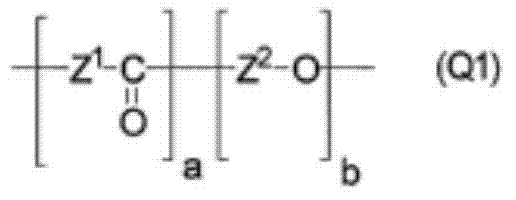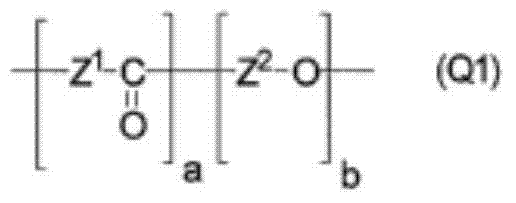Polymer electrolyte membrane, membrane electrode assembly using same, and solid polymer fuel cell
A polymer electrolyte, phase separation technology, applied in solid electrolyte fuel cells, fuel cells, fuel cell parts and other directions, can solve the loss of membrane mechanical strength, physical durability, difficulty in recycling and reuse of waste treatment materials, proton conduction It has the advantages of excellent mechanical strength and chemical stability, excellent proton conductivity, and excellent physical durability.
- Summary
- Abstract
- Description
- Claims
- Application Information
AI Technical Summary
Problems solved by technology
Method used
Image
Examples
Embodiment
[0233] The present invention will be described in more detail through examples below, but the present invention is not limited thereto. In addition, the measurement conditions of each physical property are as follows. In addition, although the chemical structural formula was inserted in this Example, this chemical structural formula was inserted for the purpose of helping the reader's understanding, and it is not limited thereto.
[0234] (1) Ion exchange capacity
[0235] Determined by neutralization titration. The measurement was carried out 3 times, and the average value was taken.
[0236] 1. Perform proton replacement, wipe off moisture from the membrane surface of the electrolyte membrane fully washed with pure water, and vacuum dry at 100° C. for 12 hours or more to obtain the dry weight.
[0237] 2. Add 50 mL of a 5% by weight sodium sulfate aqueous solution to the electrolyte, and let it stand for 12 hours to perform ion exchange.
[0238] 3. Titrate the generated...
Synthetic example 1
[0327] Synthesis of 2,2-bis(4-hydroxyphenyl)-1,3-dioxolane (K-DHBP) represented by the following general formula (G1)
[0328]
[0329] Put 49.5g of 4,4'-dihydroxybenzophenone, 134g of ethylene glycol, 96.9g of trimethyl orthoformate and 0.50g of p-toluenesulfonic acid monohydrate into a 500mL flask equipped with a stirrer, a thermometer and a distillation tube and dissolve. Then keep stirring at 78-82° C. for 2 hours. Furthermore, internal temperature was raised gradually to 120 degreeC, and it heated until distillation of methyl formate, methanol, and trimethyl orthoformate stopped completely. After cooling the reaction solution to room temperature, the reaction solution was diluted with ethyl acetate, and the organic layer was washed with 100 mL of a 5% potassium carbonate aqueous solution, separated, and then the solvent was distilled off. 80 mL of dichloromethane was added to the residue to precipitate crystals, which were filtered and dried to obtain 52.0 g of 2,2-b...
Synthetic example 2
[0331] Synthesis of 3,3'-sodium disulfonate-4,4'-difluorobenzophenone represented by the following general formula (G2)
[0332]
[0333] Make 109.1 g of 4,4'-difluorobenzophenone (Aldrich reagent) in oleum (50% SO 3 ) in 150 mL (Wako Pure Chemical Chemicals) for 10 hours at 100°C. Then, a small amount was poured into a large amount of water one by one, and after neutralizing with NaOH, 200 g of common salt was added to precipitate the composite. The resulting precipitate was separated by filtration and recrystallized from an aqueous ethanol solution to obtain 3,3'-sodium disulfonate-4,4'-difluorobenzophenone represented by the above general formula (G2). The purity is 99.3%. structure through 1 Confirmed by H-NMR. Impurities were quantitatively analyzed by capillary electrophoresis (organic matter) and ion chromatography (inorganic matter).
PUM
| Property | Measurement | Unit |
|---|---|---|
| crystallization enthalpy | aaaaa | aaaaa |
| crystallization enthalpy | aaaaa | aaaaa |
| crystallization enthalpy | aaaaa | aaaaa |
Abstract
Description
Claims
Application Information
 Login to View More
Login to View More - R&D
- Intellectual Property
- Life Sciences
- Materials
- Tech Scout
- Unparalleled Data Quality
- Higher Quality Content
- 60% Fewer Hallucinations
Browse by: Latest US Patents, China's latest patents, Technical Efficacy Thesaurus, Application Domain, Technology Topic, Popular Technical Reports.
© 2025 PatSnap. All rights reserved.Legal|Privacy policy|Modern Slavery Act Transparency Statement|Sitemap|About US| Contact US: help@patsnap.com



